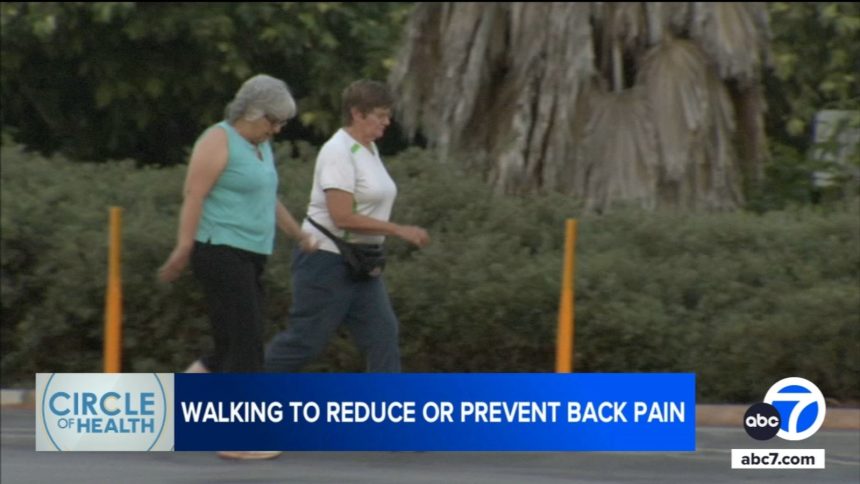Walking for Health
A recent study highlights that walking for just 78 minutes each day can significantly reduce the risk of chronic back pain and early death from heart disease. This finding serves as an encouraging reminder of the health benefits associated with regular physical activity.
New Insights into Walking
While the popular goal often cited is 10,000 steps per day, research indicates that even brisk walking for just 15 minutes daily can lower the risk of heart disease-related early death by as much as 20%. Furthermore, accomplishing 7,000 steps daily has been linked to improved brain function and a reduced risk of dementia.
The Key to Preventing Back Pain
According to experts, walking for 78 minutes each day is particularly effective in mitigating chronic back pain. Claudia Skinner, a 71-year-old nurse who works at Providence St. Jude Medical Center, exemplifies this principle. She typically walks three to four miles during her shifts and often adds another three to five miles in the evenings.
Staying Active
“My back is good,” Skinner stated, illustrating her strength and vitality amidst common challenges faced by others her age.
Research Findings
New studies underscore the positive impact of long walks on chronic low back pain management and prevention. Dr. Harpreet Bawa, an orthopedic surgeon at Dignity-Health Northridge Hospital, noted, “I think that this is kind of what they’ve identified as the inflection point, and I think the take-home message is more is better.”
The Mechanics of Walking
Walking engages core muscles, essential for back health. Dr. Bawa explained, “Strengthening the center portions of your body… when you’re upright, you’re mobilizing. You are strengthening that area which then leads to a lower incidence of back pain.”
Study Insights
A study involving 11,000 participants in Norway revealed that individuals walking for 78 minutes daily experienced a 13% decrease in back pain risk, while those walking for 100 minutes showed a 23% reduction. The study also indicated that walking with higher intensity provided additional benefits, although these were less significant.
Incorporating Walking into Your Day
Dr. Bawa encourages finding opportunities to walk throughout the day, saying, “Whether it’s a lunch break or before work, whenever you can move more, I think you’ll see the benefits.”
Skinner embraces this approach, opting for stairs over elevators whenever possible. “Absolutely! Always,” she affirmed.
With 46 years of service at her hospital, Skinner feels confident that reaching her 50th birthday will be “a walk in the park.”






